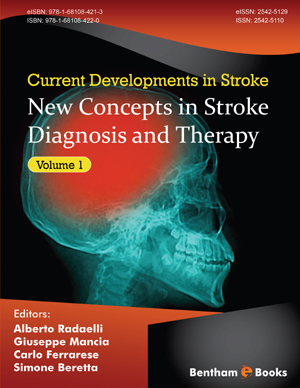Abstract
Stroke is one of the main cause of chronic disability in industrialized countries and, in 2010, it was among the top eighteen diseases that most frequently lead to “years lived with disability”. All the quoted conditions decreased between 1990 and 2010, with the exception of the age-standardized rates for stroke. Caring addressed to post-stroke patients involves multiple challenges, due to stroke causes a wide range of impairments, among them motor skills deficits are the most common, even if should be enumerated other areas of impairment such as sensory, visual, swallowing, cognitive and language related. Rehabilitation provides the possibility of reducing the burden of disability and, nowadays, one of the most exciting areas of stroke research is the prospect to increase rehabilitation effectiveness, influence neurological recovery and, subsequently, impact clinical outcomes. In recent years, following the spreading of studies regarding neuroplasticity, innovative rehabilitative approaches have been based on reasonable and intriguing theoretical assumptions. The restorative methods represent significant tools for stroke rehabilitation; nevertheless, they become meaningless if not integrated within the context of a rigorously personalized care plan. A comprehensive rehabilitation plan should begin as soon as the stroke occurs. Management must be directed toward preventing functional deterioration, restoring lost abilities and functions, gaining compensatory strategies, suggesting environmental changes, increasing participation and consequently achieving the highest quality of life after the brain damage. The grade to which a rehabilitation program meets the challenge of improving dignity and independence of stroke survivors is assessable through the adoption of a systematic approach that relates the diseased-state and disability to outcomes of care. The following can be considered as stroke rehabilitation strongholds: (1) to provide a consistent rehabilitation plan throughout the acute, sub-acute, and chronic phases: stroke rehabilitation is a dynamic pathway starting following the symptoms onset and accompanying the patient in the care pathway until his going back to community; (2) to set goals based on the prediction of the single cases evolution (short, medium and long-term goals) and design an appropriate pathway: the first step for a well-conceived rehabilitation management is to establish appropriate setting addressed to the patient; (3) to provide a comprehensive, coordinated, interdisciplinary approach: since the strokes clinical manifestations are multidimensional, rehabilitation is best realized through the coordinated and well harmonized actions among the whole members of a specialized team; (4) to build up a tailored rehabilitative treatment.
Keywords: Action observation, Comprehensive approach, Individual rehabilitation project, Multidisciplinary, Neuroplasticity, Non Invasive brain stimulation, Prognosis, Robotic device, Setting, Tailored treatment, Task-oriented treatment.






















